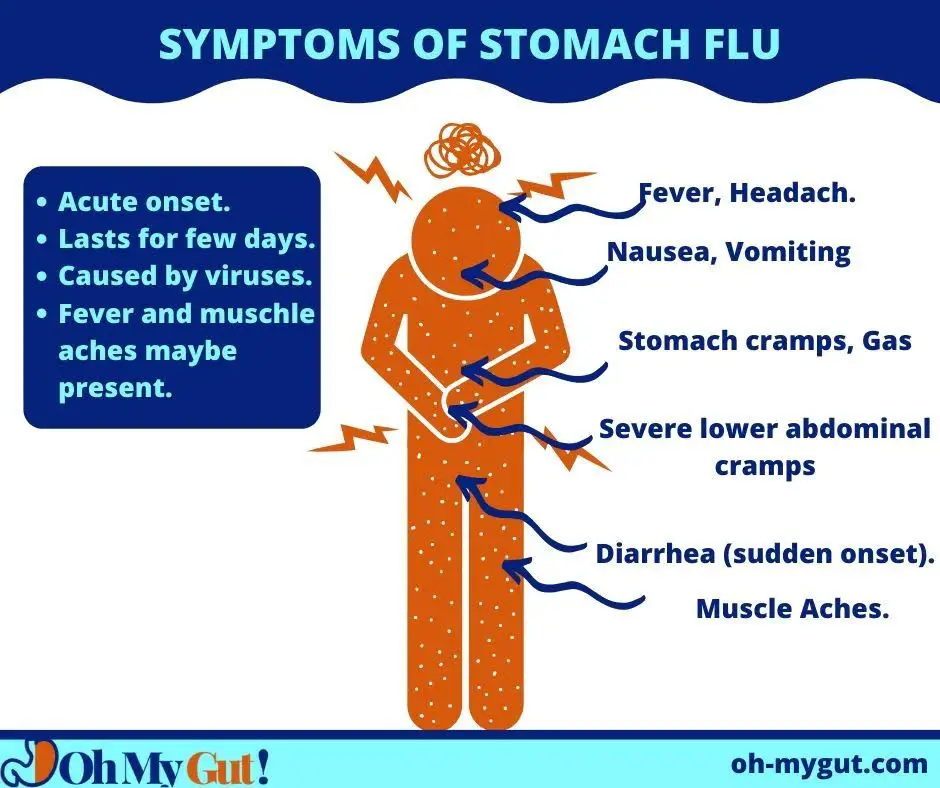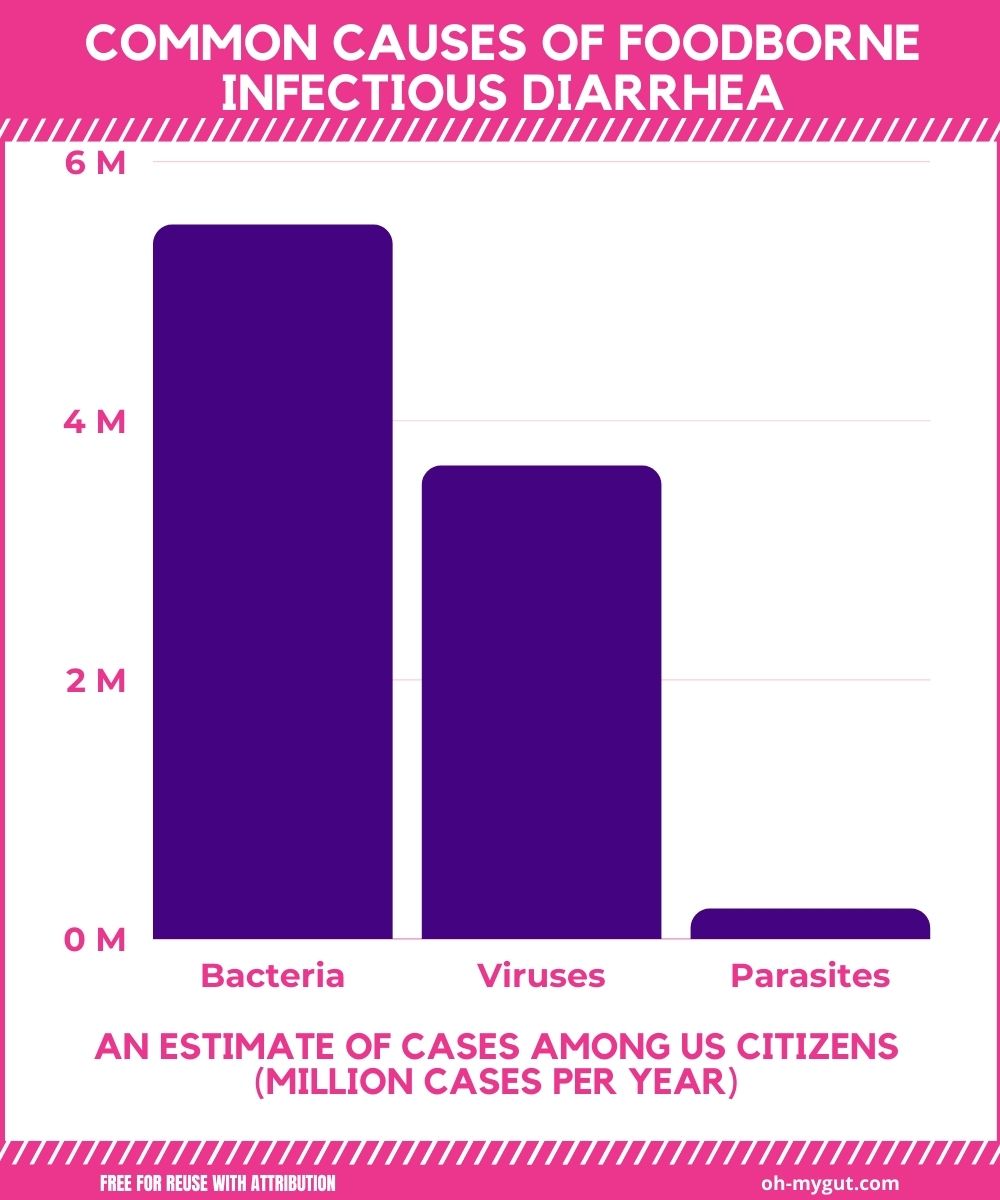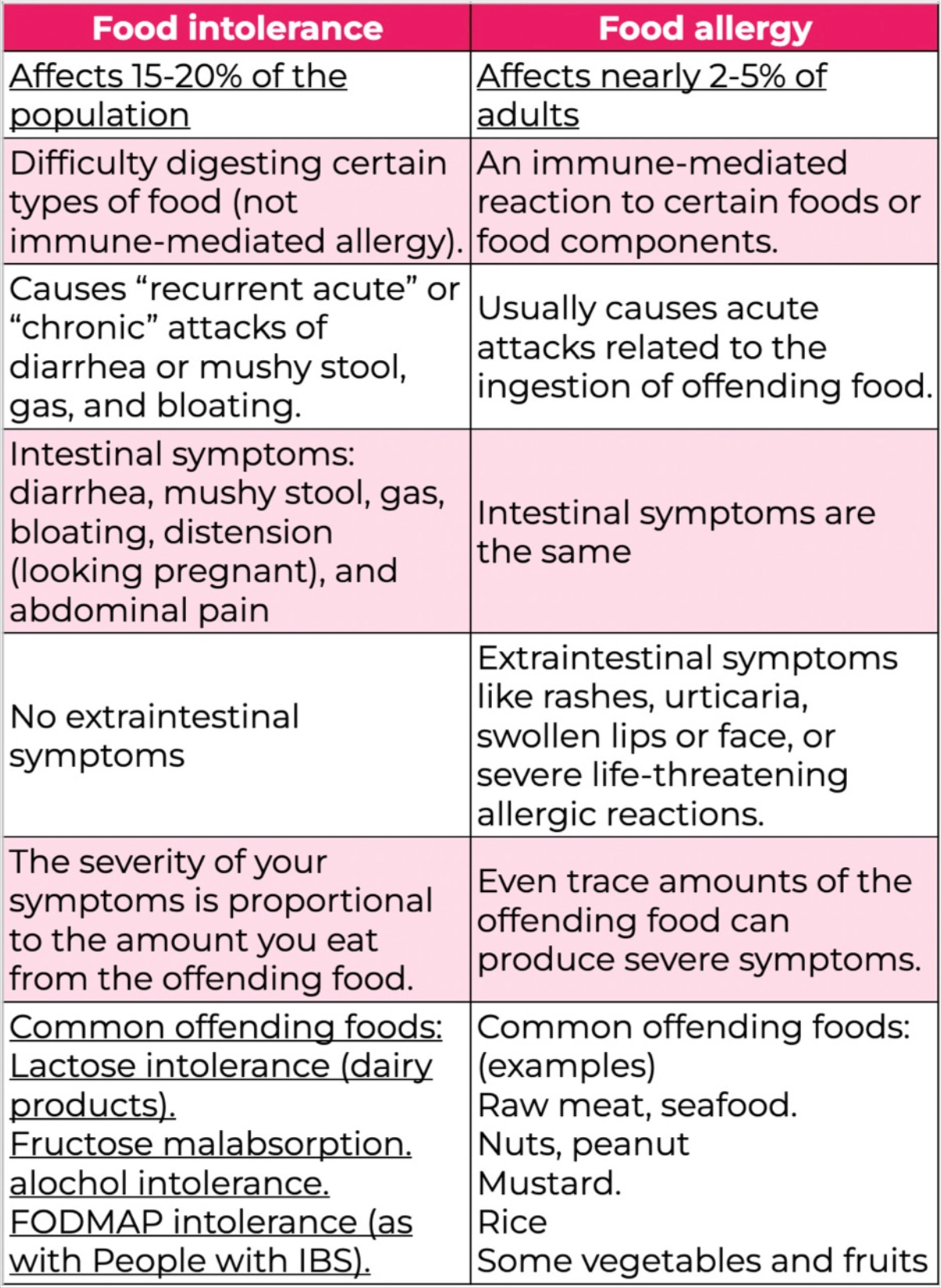2 Main Causes of Throwing Up Yellow Bile & Diarrhea
Our content is not intended nor recommended as a substitute for medical advice by your doctor. Use for informational purposes only.
The most common causes of throwing up bile and diarrhea are viral gastroenteritis and food poisoning. Other causes include medications, food intolerance, allergy, and psychological stress.
Keep reading this article to learn about the main causes of vomiting, bile, and diarrhea.
1. Acute viral gastroenteritis.
- The most common cause of ACUTE onset is throwing up bile and diarrhea.
- It is caused by stomach viruses such as norovirus and Rotavirus.
- It typically lasts for hours to a few days (1-3 days).
- No specific treatment; supportive measures help to avoid dehydration and prevent vomiting.
- See a doctor If the vomiting continues for more than 12 hours or if you have risk factors such as age, extremities, and chronic diseases.
Stomach flu (acute viral gastroenteritis) is an infection of the stomach and intestine with stomach viruses. It is the most common cause of acute onset throwing up (food or bile) and diarrhea.
The most common causes of stomach flu include:
- Norovirus.
- Rotavirus (less common nowadays due to the widespread use of the rotavirus vaccine).
- Adenoviruses.
- Astroviruses.
You often get infected by these viruses through contacting an infected person, surfaces, or foods containing the virus.
Viral gastroenteritis is typically a self-limiting disease (within a few days). However, it may cause persistent vomiting (bile vomitus) and diarrhea.
Symptoms:
Acute onset nausea.
Vomiting may also occur. If the vomiting is severe or very frequent, you may vomit yellow bile, especially when your stomach is empty.
Loss of appetite may also occur, but you may feel hungry and nauseous simultaneously.
Abdominal colics.
Acute onset diarrhea (watery, often yellowish).
Headaches.
Fatigue.
Muscle aches.
Low-grade fever may also occur.
Signs of dehydration from severe diarrhea and vomiting may occur in infants or the elderly:
- Extreme thirst sensation.
- Dry mouth (scanty saliva) and dry eyes (scanty tears).
- Peeing too little (oliguria).
- Fast heartbeats.
- Dizziness, lightheadedness.
- Confusion and coma in severe cases.

No specific drugs can kill the virus. And the treatment is only supportive with:
- Good hydration (water).
- Eating bland, easy-to-digest foods: The BRAT diet is the most commonly recommended for gastroenteritis (BRAT stands for bananas, rice, apple sauce, and toast).
- Avoid caffeine, a high-fat diet, and spicy foods.
- Rest until the vomiting and diarrhea stop.
- Age extremities (the infants and the elderly) are the most vulnerable to complications such as severe dehydration; see a doctor if there is persistent vomiting or signs of dehydration.
- Age extremities (infants and the elderly), patients with chronic disease should seek medical help immediately.
- Also, see a doctor if you have jaundice, high fever,
Learn more about viral gastroenteritis.
2. Food poisoning.
Food poisoning (foodborne illness) often results from ingesting foods contaminated by organisms (bacteria, viruses, or protozoa) or their toxins.
Some types of food poisoning cases severe persistent vomiting and diarrhea. Frequent attacks of vomiting often lead to the throwing up of bile.
Vomiting-predominant food poisoning often occurs due to ingesting a performed toxin with food.
Common causes include (reference):
- Staph. Aureus enterotoxin.
- Bacillus cereus emetic toxin.
- Norovirus also can cause such a condition.
The chart below illustrates the common causes of food poisoning (foodborne infectious diarrhea and/or vomiting) in the USA (reference).

Symptoms of food poisoning:
The symptoms of food poisoning are often similar to that of the stomach flu (viral gastroenteritis). However, The vomiting is often more predominant, diarrhea is more severe, and the fever may become high grade.
Vomiting yellow bile and diarrhea and diarrhea can occur with certain causes of food poisoning as Bacillus Cereus food poisoning.
The table below illustrates the main differences between stomach flu and food poisoning.
| Stomach Flu | Food Poisoning |
|---|---|
| The most common causes of vomiting are yellow bile and diarrhea. | It is also a common cause but less prevalent than viral gastroenteritis. |
| Caused by viruses | Caused by bacteria, viruses, parasites, toxins, or chemicals. |
| Food is not the only source of infection; stomach flu can be acquired by unwashed hands or unclean surfaces, droplet infection, or direct contact with an infected person. | Infection is due to eating or drinking contaminated food/drinks. |
| Symptoms start after a day or more of infection. | Symptoms start shortly after eating contaminated food (usually 2-6 hours) |
| Complications are rare | The complication is common such as severe vomiting, diarrhea, dehydration, or even dangerous complications, as with botulism. |
| Diarrhea is usually brownish or yellowish. | Diarrhea is more severe, watery, and can be yellow, greenish, and bloody. |
| Vomiting is common but is often mild. | Vomiting is Common; vomiting bile commonly occurs with severe attacks. |
Tips for dealing with food poisoning:
- Let the vomiting settle: stop eating and drinking for a few hours.
- Suck on ice chips or try small sips of water.
- Avoid dairy, caffeine, alcohol, smoking, fatty, and fried foods.
- Eat bland foods when vomiting stops, such as a BRAT diet (Bananas, Rice, Apple sauce, and Toast) to help with diarrhea.
- Try over-the-counter
3. Less common causes of vomiting, bile, and diarrhea.
The causes include:
- Food intolerance.
- Food allergy.
- Medications.
- And other less frequent causes such as celiac disease and IBD.
A. An attack of food intolerance or allergy.
Your body may react to certain foods leading to severe symptoms such as vomiting, bile, and diarrhea.
The two main types of food reactions are:
- Food intolerance.
- Food allergy.
The table below illustrates the differences, clinical pictures, and main offending foods for both food intolerance and food allergy.

B. Certain medications.
Many medications can affect your digestive tract and cause nausea, vomiting, or diarrhea.
Common medications that may be a cause of throwing up bile and diarrhea include:
- Some antibiotics such as erythromycin, penicillin, etc.
- Nonsteroidal anti-inflammatory drugs such as ibuprofen and ketorolac.
- Chemotherapy (cancer treatment).
- And others.
C. Stress and anxiety
Severe psychological stress, such as anxiety, panic attacks, and extreme emotions, may trigger vomiting and diarrhea.
Throwing up yellow bile is a result of frequent vomiting on an empty stomach. The more frequent the vomiting, the more likely it contains yellow bile.
D. Others:
- Celiac disease
- Acute diverticulitits.
- Irritable bowel syndrome.
- Migraine attacks.
- Labyrinthitis.
- Acute cholecystitis.
- Bile reflux gastropathy.
- Acute appendicitis.
- Drug toxicity such as lithium and digitalis toxicity.
- Neuroendocrine tumors.
- Thyroid gland dysfunction (hyperthyroidism).
- Adrenal gland dysfunction.
- Evidence-based
- Written by a doctor.

Related Posts:
- 5 Main Causes of Throwing up Feeling after Eating…
- Does the pancreas Produce bile? & Why bilirubin is…
- Bloated as Pregnant? 6 Main Causes & Treatments.
- 5 Main causes of abdominal pain and blood in the urine
- Tea-colored Urine: 5 Main Causes & When to Worry
- Clear Urine with Bubbles: 6 Main Causes & When to Worry










